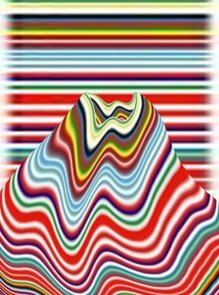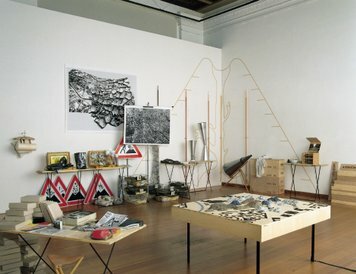the Utopia
Utopia Res publica Europae
The idea behind the interdisciplinary long-term project Amikejo is the impulse to a radical rethinking about the structure of and confrontation with regions and cultures. Together with Ulrike Guérot the notion is to dissociate from Nation States and to draw up a European Republic with a focus on the people and their respective culture.
Volcanoes as Symbol for a political and social utopia:
Valeska Peschke has spent years on researching the volcano. The subject of volcanoes is a very global one. It deals with the development of the Earth, the explanation of the Earth’s inside and its cosmic cohesion. The volcano is a symbol of transformation and an utopian idea about Europe; the crater is seen as a mouth, which speaks about the inner, global relations and continents, beginning from the melted interior of the Earth. It is for Valeska a beautiful symbol of cohesion of the globe: it shows a sphere with a fiery core: the volcanoes on the surface are connected via sub-surface channels with the glowing core. This force was fascinating her, coming from one central point of the Earth. This is an increasing force that is suddenly covering everything, thereby destroying a lot and at the same time it develops something flourishing and fertile. The volcano is male as also female. In a sculptural process the different elements of the volcano are layering and hence building a symbol of force, power (male) on the one hand and malleability, fertility (female) on the other. This vivid and circular process leads to a renewal, which accrued out of itself. The moment of this eruption or outbreak that eventually leads into a renewal can be compared with the moment of “Instant”. It is that space in-between of cause and the following transformation. This moment of outbreak or that space in-between is intellectually influenceable, malleable and a space in which something is happening. The volcano is for Valeska Peschke a sculptural emblem of change and conversion. Europe has to be seen as a volcano, as an interaction between different continental plates and its cultures above. Chaos, uncertainty and a certain level of hardness, dirt and roughness are essential parts for art and creativity. Historically we can see this picture also at the turn of the century from the 19th to the 20th century. Endless new buildings sprang up energetically, art created groundbreaking results and literature showed the ambivalence between the euphoria of the thriving economy and the insecurity of the people because everything changed all at once. It was also the time of the “Gründerzeit” or Wilhelmine era, which can be compared with so-called Start-ups nowadays. Moreover, the fall of the Berlin Wall 1989 after the Cold War was a moment of eruption, when thousands of people were entering a new area, full of possibilities and chances. It was not only a reunification, but a fundamental change in thinking. Like the volcano is erupting over and over again in order to stay vivid, also society has to experience outbreaks and rebuild itself to keep humanity lively. We cannot focus on stagnation after the transformation, believing the feeling of the renewal will simply continue, thus we cannot freeze intellectually.
As an artist, Valeska Peschke concentrates on visualising society’s happenings in a creative way. Large-scale installations such as „Aschewolke“ (ash cloud), „First World Catastrophy Camp“ and „Vulkane in Berlin“ (volcanoes in Berlin) are implementing Peschke’s long-time and global art project. As a “volcano researcher” she was guiding tour groups through cities, pointing visible ways in urban space.
My space is the idea I go through like being on a trip. My work deals with traveling environments and environments in transformation: For me the city consists of places where flows of thought, time and material can be experienced. I develop conceptional worlds and instructions for actions that offer the possibility to experience these or to enter them. The objects are ‘room detectors’ for space in transition. I am observing how the model worlds behave towards the specific site, how they develop into prototypes of objects or buildings, cartographic and topological examinations. A trip begins through these spaces whereby traveler and model can change continuously. I called this process „work of a volcano“.
1 Susan Sonntag: Der Liebhaber des Vulkans , Roman 1989
2 Theodor Fontane: Stechlin. Roman. Hrsg. von Klaus-Peter Möller. Aufbau, Berlin 2001
3 Valeska Peschke, Vulkane in Berlin, Ein Reisebuch, Goldrausch, Katalog zur Ausstellung, Martin-Gropius-Bau Berlin,1996
4 Katja Krafft, Vulkanforscherin, National Geographic, 1989
Copyright © All Rights Reserved Idea & Concept & Art by Valeska Peschke, Berlin 2017

